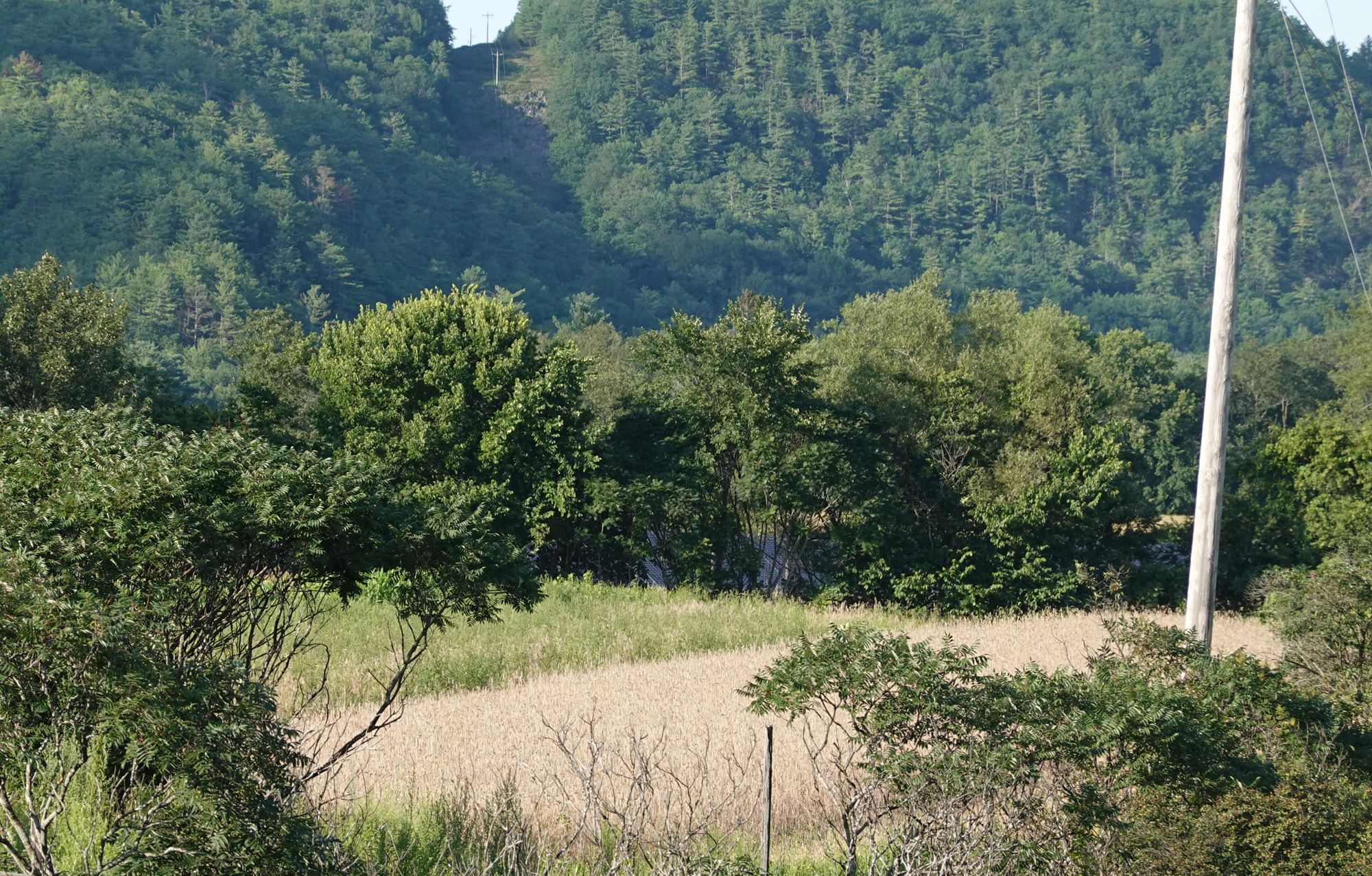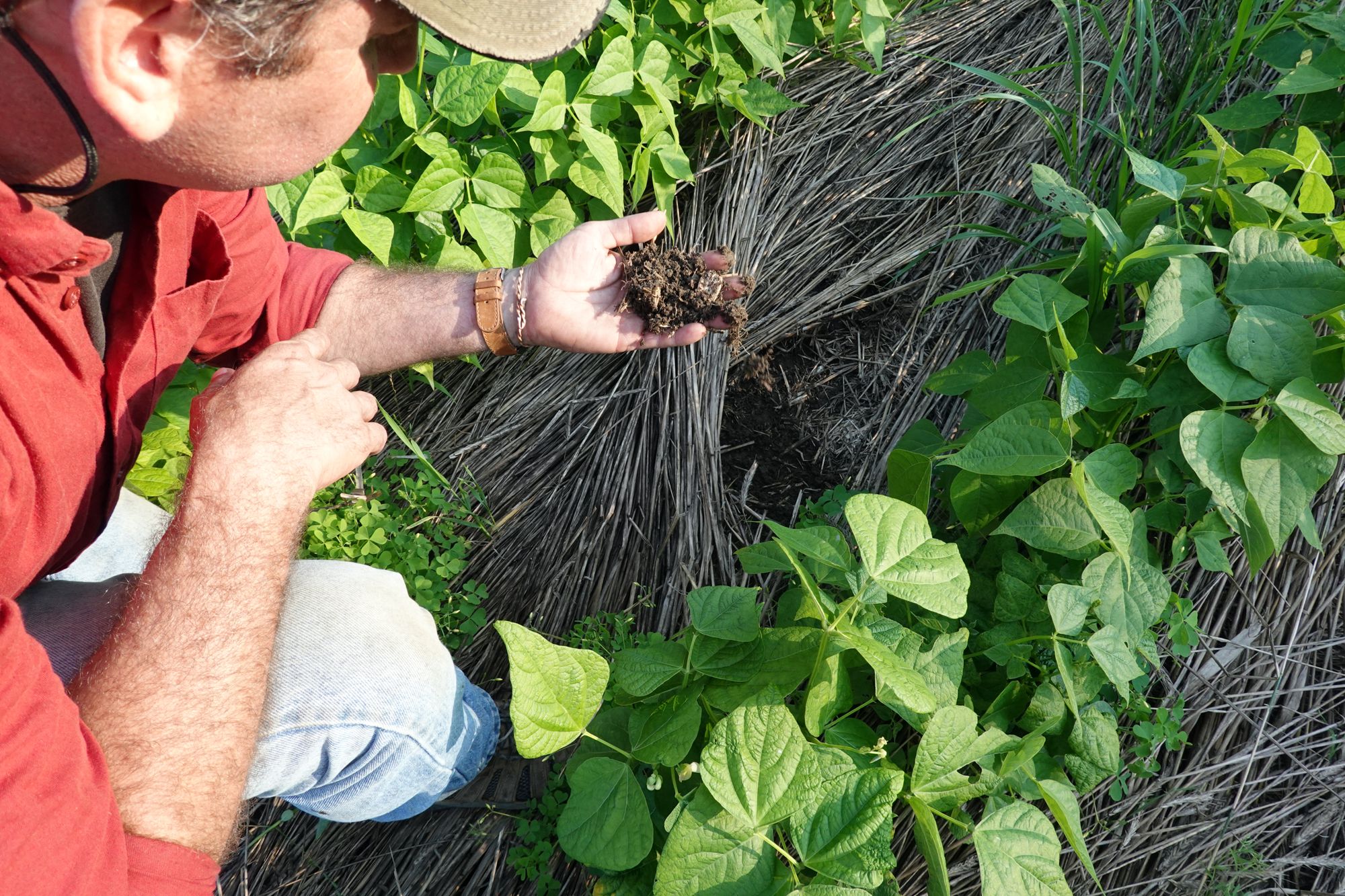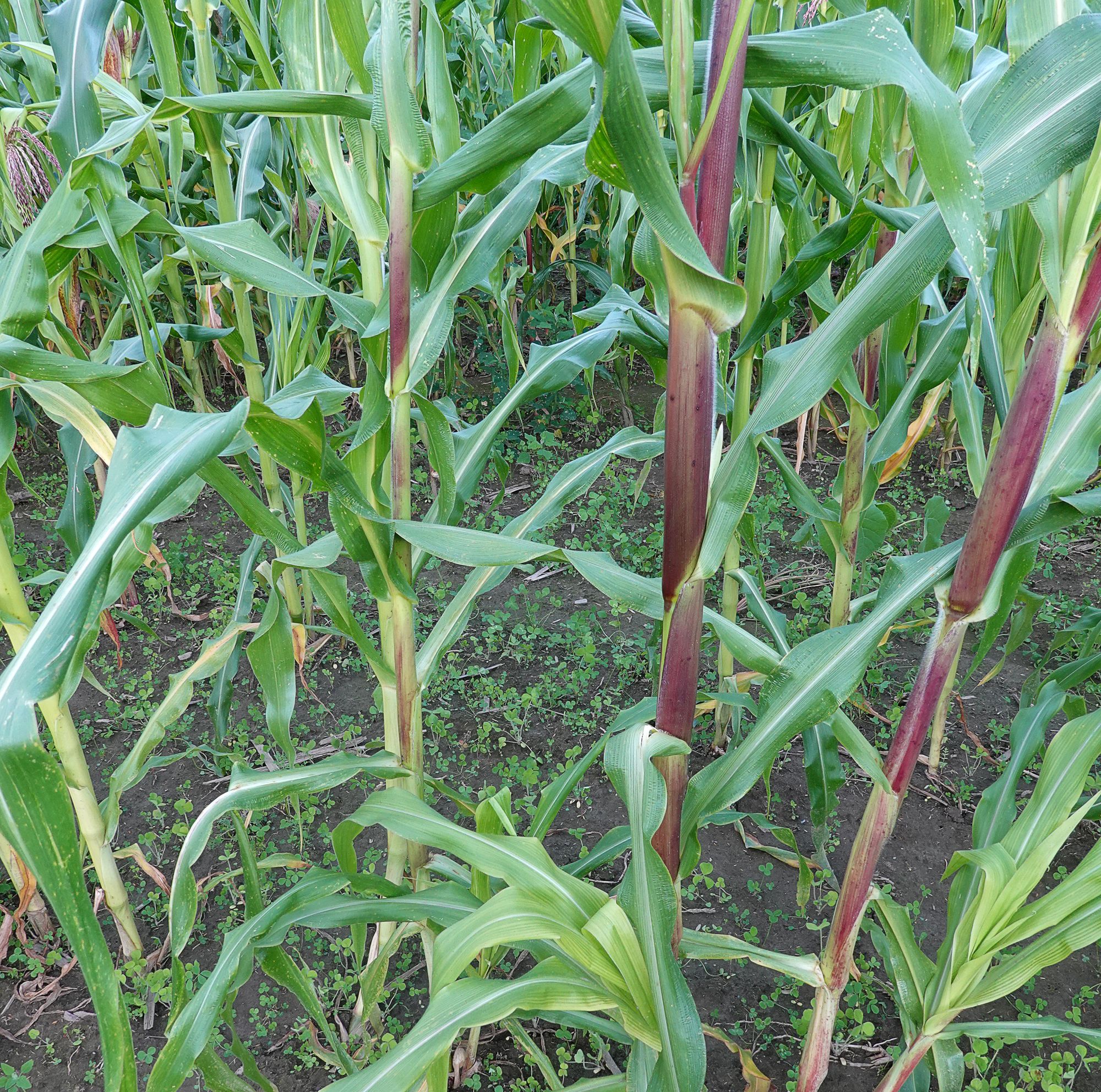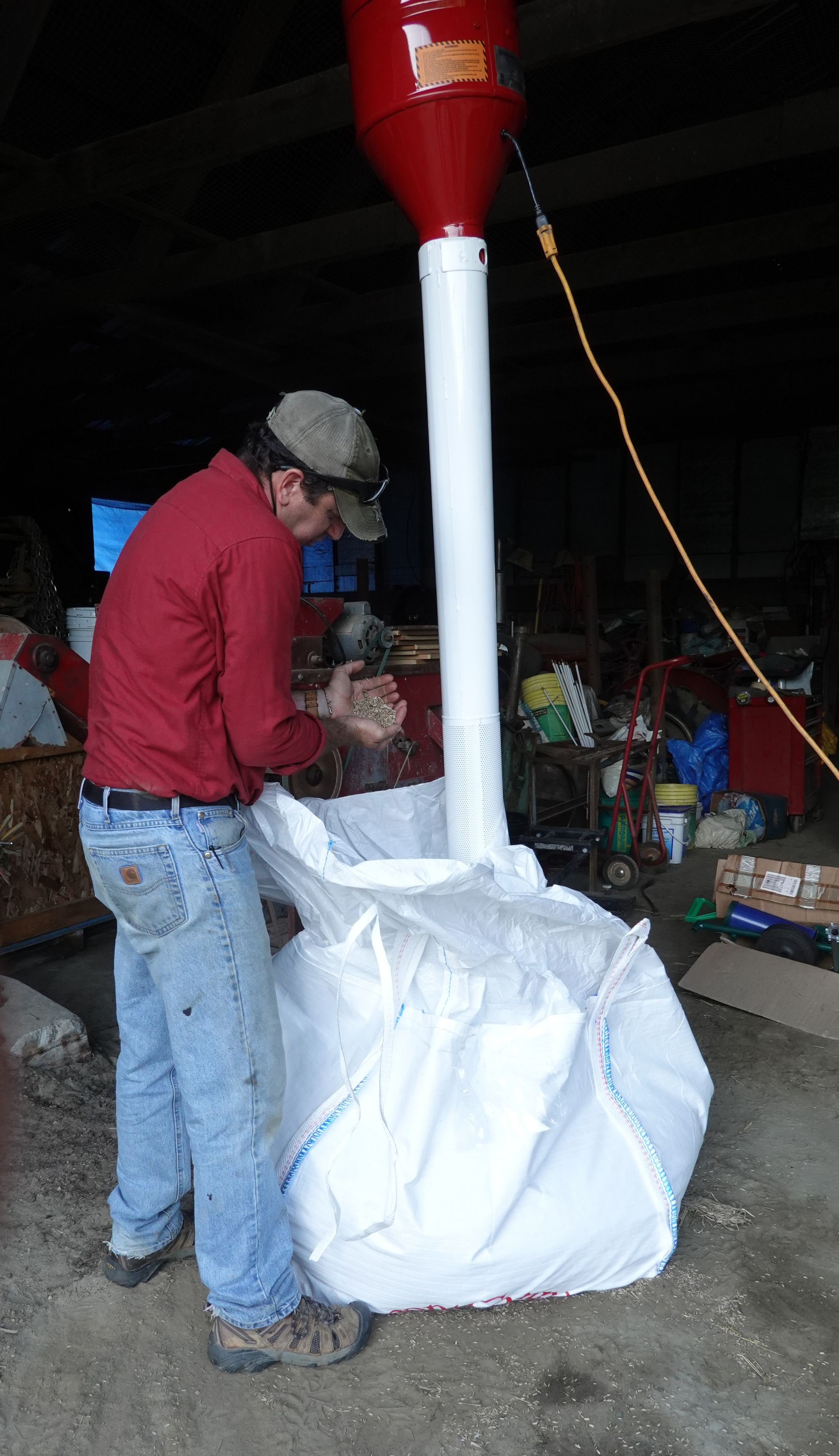Grain farming, with a twist, returns to the Upper Valley
The fine sandy loam soli at Birch Meadow Farm makes it possible to grow spring wheat.

For years, growing grain has been Mike Snow’s passion. It began with managing a small farm and education center across the Potomac River from Mount Vernon, the farm and estate owned by George Washington. The estate featured a 16-sided threshing barn where horse power replaced the tedious hand-threshing of wheat. Horses would trot a circular path while trampling wheat underfoot to separate the grain. With a nod to tradition, Mike grew wheat and spelt and cut them with a sickle. His grain was threshed by horses in George Washington’s barn.
From there Mike moved on to Virginia where he created a farm and “multi-functional landscape” on an unbuildable 300 acres of a 4,000 acre housing development. Along with the medley of vegetables, beans, chickens, cows and pigs that he rotated through the fields he continued to experiment with various grains.
Still dreaming of grain, Mike returned to Vermont where he had spent his college years, and took up residence in the family home in Post Mills. He began to amass equipment, including a small combine harvester from a farmer across the state in Grand Isle, Vermont. Transporting this machine was no trivial affair. Fortunately Mike had befriended a fellow farmer in Fairlee who obligingly lent a hand and a vehicle. The harvester is now housed in Fairlee at Birch Meadow Farm, where Mike rents 6 acres of arable land.

Mike’s vision is not just to grow grain, but to grow it it organically and by the methods of regenerative agriculture. That’s a high bar, and the distinction between organic and regenerative agriculture deserves elaboration. At its most basic, organic agriculture uses ecologically based pest controls and biological fertilizers derived largely from animal or plant wastes and nitrogen-fixing cover crops. This replaces chemical fertilizers, pesticides, and the attendant environmental harms of conventional agriculture. Organic has evolved to mean food production that relies on ecological processes, biodiversity, and cycles adapted to local conditions while reducing unsustainable inputs from afar. Regenerative agriculture incorporates this, but places the health of the soil itself at the center. Soil is not just inert stuff; it is now understood to be a living, breathing ecosystem. Its health determines fundamentals like nutrient cycling, water infiltration, resistance to erosion, and carbon storage.
The key to healthy soil lies in maximizing the number of living roots and the biodiversity of the soil microbial community. Bare soil does not harbor much in the way of roots, whereas growing cover crops whenever land is not in production keeps roots in the ground. Roots absorb nutrients like nitrogen and retain them in the system. And roots do more than take in nutrients, they give out carbohydrates, proteins, amino acids and other compounds that attract and feed a host of fungi and bacteria. A diversity of plant species and roots means a greater variety of foods for microbes and a greater diversity in the resulting microbe population. Fungi in particular help plants to grow by forming tight associations with plant roots through which they provide minerals in exchange for sugars manufactured by plant photosynthesis.
Both roots and microbes exude organic slimes and glues that bind soil particles together into clumps with air spaces, or pores, between them. Soil pores allow roots to take in oxygen. Pores also allow rain to soak into soils rather than running off uselessly. Runoff readily erodes soils that are not protected by plant cover and bound together by roots. This problem of topsoil erosion is serious and deserves more attention. According to the Rodale Institute, we have about 60 years’ worth of topsoil left under conventional farming practices.
Organic farms do not use herbicide sprays. Instead they rely on frequent tilling to control weeds. By contrast regenerative farming emphasizes minimal soil disturbance while keeping maximum soil cover with mulch or cover crops to suppress weeds. Mike is at the stage of experimenting with the best approaches for growing grains by regenerative agriculture methods and establishing a healthy soil.
One regenerative practice he is assessing is “no-till” with black beans as the test crop. Last year he planted half a field with winter rye, a cover crop that germinated in the fall and grew this spring. As soon as the rye stopped growing and began pollen production it was flattened to make a rooted mulch using a heavy “roller-crimper.” The beans were planted through this mulch without any tilling. In the rest of the field beans were grown conventionally by tilling and seeding into bare earth. It’s still too early to evaluate the bean harvest, though Mike noted that the bean plants growing through mulch were shorter than the “conventional” plants, probably because the mulch kept the soil cool for longer, delaying growth. Beneath the decaying mulch the soil was promisingly black with organic matter, although weed suppression was somewhat lackluster.

Mike is also using a method called intercropping in his rows of popcorn. The corn was started in bare soil and once the plants were established, clover was seeded between the rows. The shade from the corn suppressed the clover’s growth. However once the corn plants are cut the clover will start to grow explosively, covering the soil and binding it together for the winter. Next year the plants could be tilled under to provide organic matter or become a foraging haven for a flock of chickens.

At Birch Meadow Farm the soil type is defined as Agawam, a fine sandy loam. It dries fast in the spring, allowing Mike to work the land early and plant his crop of organic hard spring wheat, the type of wheat that is prized by bakers for its high protein content. Over in the Champlain Valley, by contrast, the soils are heavier and dry slowly. Fall is the time to plant there, but it is with winter wheat, a variety that is lower in protein.

Along with spring wheat, Mike is producing organic rye and oats this year. Local baking enthusiasts are purchasing his wheat and rye. Indeed, the demand for organic grain is increasing in the US, a trend that could bode well for this small beginning venture. It's being helped along by the Connecticut River Watershed Farmers’ Alliance that provides shared equipment like a No-Till seeder that plants seeds through dense mulch, to let farmers try new techniques without a financial commitment. Even so, establishing some form of regenerative grain agriculture will take several years of experimentation, trial, and error. As Mike put it, “Farming exists on a continuum, and we’re still finding our what a stable regenerative system looks like in Vermont.”
Editor's Note: Mike Snow is a member of the Thetford Planning Commission.
